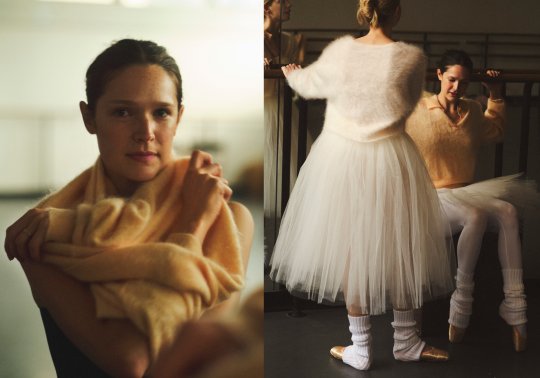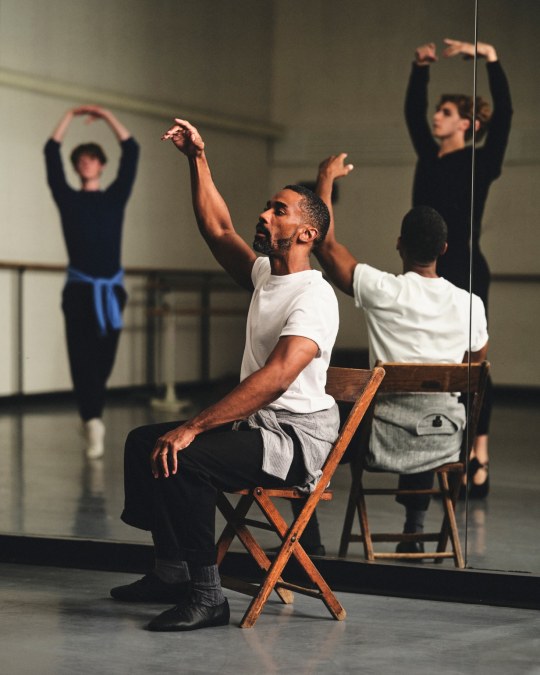#new york city ballet
Text
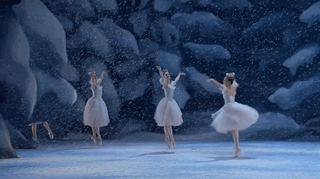

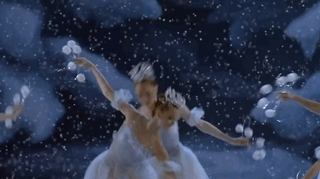



the nutcracker (1993)
*ੈ‧₊˚ ❆ .ೃ࿔*
corps de ballet of the new york city ballet performing “waltz of the snowflakes”
dir. by emile ardolino, choreo. by george balanchine
#posting bc i saw daniel ulbricht and emma von enck in the nutcracker pas de deux today (i cried so hard)#staticsnowfall#art#dance#ballet#photography#film#fashion#the nutcracker#nutcracker#nutcracker ballet#new york city ballet#george balanchine#balanchine#balletcore#ballet aesthetic#tchaikovsky#pyotr ilyich tchaikovsky#snow#winter#wintercore#winter aesthetic#coquette#90s#90s films#gif#my gifs#aesthetic#coquette aesthetic#girl blogging
435 notes
·
View notes
Text
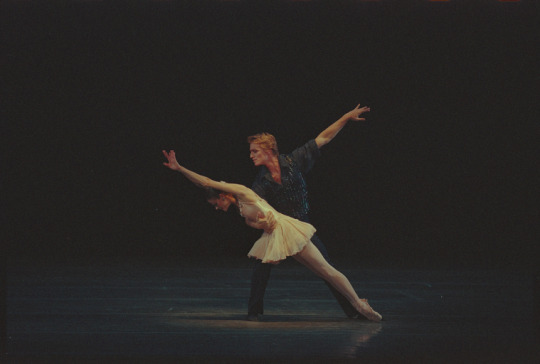
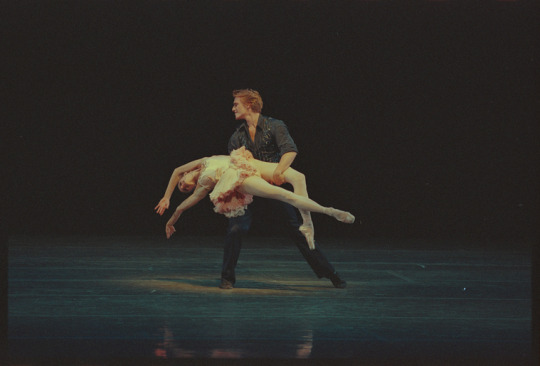
New York City Ballet photographed by Costas
Sources: x x
#new york city ballet#george balanchine#the piece is “who cares”#i think that's:#kay mazzo#peter martins#lol#costas#jerome robbins dance division
158 notes
·
View notes
Photo

Jovani Furlan Junior - New York City Ballet
#jovani furlan junior#new york city ballet#trey mcintyre#dance#ballet#dancer#ballerino#bailarín#brazilian ballet dancers#jovani furlan#danseur
511 notes
·
View notes
Text


Unity Phelan and Russel Janzen in Serenade (New York City Ballet 2023)
152 notes
·
View notes
Text
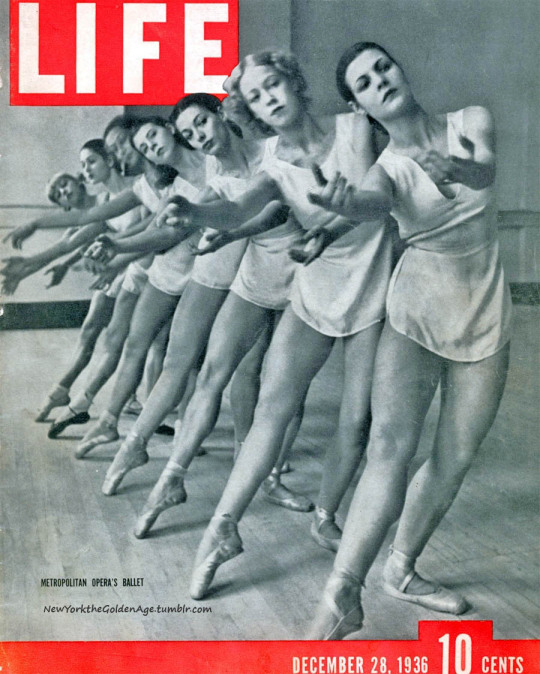
Life cover from December 28, 1936 featuring members of the Metropolitan Opera's ballet company practicing. This company, called the American Ballet, eventually morphed into the New York City Ballet.
Photo: Alfred Eisenstaedt via Life magazine Instagram
#vintage New York#1930s#Alfred Eisenstaedt#ballet#Life magazine#Metropolitan Opera#New York City Ballet#NYCB#Dec. 28#28 Dec.#vintage NYC#vintage ballet
119 notes
·
View notes
Photo

Allegra Kent in Balancine’s production of The Seven Deadly Sins
Gordon Parks, “The Master of Ballet,“ Life, Dec 22, 1958
#dance#ballet#1950s#life magazine#gordon parks#allegra kent#george balanchine#new york city ballet#the seven deadly sins#kurt weill#50s#black and white#photography#vintage
51 notes
·
View notes
Text

Roman Mejia | New York City Ballet | Photo by Erin Baiano
35 notes
·
View notes
Text


Solange
831 notes
·
View notes
Text
The Story of the Original "Tea" Dancer
There was a delightful story in the Times on February 4th about George Lee, on whom Balanchine created the Tea variation in The Nutcracker. Here it is.
From Ballet to Blackjack, a Dance Pioneer’s Amazing Odyssey
George Lee was the original Tea in “George Balanchine’s The Nutcracker.” A documentary filmmaker found him and a lost part of ballet history in Las Vegas.
By Siobhan Burke
Feb. 4, 2024
Among the blaring lights and all-hours amusements of downtown Las Vegas, in a sea of slot machines at the Four Queens Hotel and Casino, George Lee sits quietly at a blackjack table, dealing cards eight hours a day, five days a week, a job he’s been doing for more than 40 years.
Lee, 88, was likely in his usual spot when the filmmaker Jennifer Lin was sifting through old photos at the New York Public Library for the Performing Arts in 2022, wondering what had become of a dancer with a notable place in ballet history. Pictured in a publicity shot for the original production of “George Balanchine’s The Nutcracker,” in the role known as Tea, was a young Asian dancer identified as George Li.
For Lin, a veteran newspaper reporter turned documentarian, the picture raised intriguing questions. In 1954, when the photo was taken, it was rare to see dancers of color on the stage of New York City Ballet, the company Balanchine co-founded. Who was this young man, this breaker of racial barriers, this pioneer? Was he still alive? And if so, what was he up to? “I became absolutely obsessed with trying to find out what happened to George Li,” Lin said in a video interview.
In just over a year, that obsession has blossomed into a short film, “Ten Times Better,” that chronicles the unexpected story of Lee’s life: from his childhood in 1940s Shanghai, where his performing career began; to a refugee camp in the Philippines, where he fled with his mother, a Polish ballet dancer, in 1949; to New York City and the School of American Ballet, where Balanchine cast him in “The Nutcracker” to “Flower Drum Song” on Broadway, his first of many musical theater gigs; and ultimately, to Las Vegas, where he left dance for blackjack dealing in 1980. (He changed the spelling of his last name in 1959, when he became a United States citizen.)
The film will have its premiere on Feb. 10 as part of the Dance on Camera Festival at Film at Lincoln Center. Lee, who last visited New York in 1993, will be in town for the occasion, an opportunity for long-overdue recognition.
“So many years I haven’t done ballet,” Lee said over coffee at the Four Queens on a recent Sunday, after his shift. “And then suddenly Jennifer comes and tries to bring everything up. To me, it was like a shock.”

George Lee today. He has been a blackjack dealer in Las Vegas for more than 40 years. Photo: Saeed Rahbaran for The New York Times
But Lin’s interest has been welcome. “Jennifer is so perfect, she knows exactly everything,” he said. “She knows my background more than I do.”
Lin was not the only one who had been searching for Lee. In 2017, while organizing an exhibition on “The Nutcracker,” Arlene Yu, who worked for the New York Public Library at the time and is now Lincoln Center’s head archivist, was puzzled by the relatively few traces of him in the library’s vast dance collection.
“I think I’d tracked him down to 1961, but after that, it was really hard to find anything,” she said. “Whereas if you look at some of his peers in ‘The Nutcracker’ in 1954, they went on to careers where there was a lot more documentation.”
Lin’s fascination with Lee emerged through her work on another film, about Phil Chan and Georgina Pazcoguin, the founders of Final Bow for Yellowface, an initiative focused on ending offensive depictions of Asians in ballet. The role of Tea, a divertissement historically rife with such stereotypes—in Balanchine’s canonical version of “The Nutcracker” and others—has been a flashpoint in those efforts.
Chan, too, had been struck by the 1954 images of “The Nutcracker,” which he came across during a library fellowship in 2020.
“I’m like, wait, there’s actually a Chinese guy,” he said — as opposed to a non-Chinese dancer with the saffron makeup or heavily painted eyes or even the artificial buck teeth worn in some old productions. “Who is this guy? And why do I not know about him?”

The "Tea" variation in The Nutcracker at City Ballet in 2015. The dancers are Ralph Ippolito, Claire Von Enck, and Baily Jones. Photo: Andrea Mohin for The New York Times
Lee, in his heyday, was a dancer to know. At just 12, he was already winning public praise. In a preview of a recital of the King-Yanover School in Shanghai, the North China Daily News called him an “extremely promising young Chinese boy, whose technique is of a very high standard.” A reviewer wrote that he “already may be said to be the best Chinese interpreter of Western ballet.” (Lee saved these newspaper clippings and shared them with Lin when they eventually met.)
Born in Hong Kong in 1935, Lee moved to Shanghai with his mother in 1941, when Shanghai was under Japanese occupation. During World War II, his father, a Chinese acrobat, was in Kunming in western China; he died in an accident on his way to visit Lee in 1945.
Lee’s mother, Stanislawa Lee, who had danced with the Warsaw Opera, was his first ballet teacher; as a child, he would follow along with her daily barre exercises. Shanghai had a significant Russian population, and with that a robust ballet scene. To earn money, Stanislawa arranged for her son to perform in nightclubs—“like a polka dance, or Russian dance, or sailor dance,” Lee said. The clubs would pay them in rice.

Little George Li in his Shanghai days. Photo: George Lee private collection via the NY Times
Fearing the Chinese Communist Party’s takeover in 1949, the two evacuated to the Philippines. An expected four months as refugees turned into two years. In 1951, an American friend of Lee’s father sponsored them to come to New York, where he introduced Lee to the School of American Ballet, City Ballet’s affiliated school.
As Lee narrates these twists and turns in the film, one memory anchors his recollections. Before they immigrated, his mother issued a warning. “You are going to America, it’s all white people, and you better be 10 times better,” he recalls her saying. “Remember that: 10 times better!”
The footage of Lee in his 20s suggests he took that advice to heart. In television appearances — with the company of the ballet star André Eglevsky, and in a number from “Flower Drum Song” on the Ed Sullivan Show — his power and precision dazzle.
“He was good; he was really good,” Chan said. “Clean fifth, high jump, polished turns, stick the landing—the training is all there. He’s already 10 times better than everybody else.”
In a 1979 interview heard in the film, the former City Ballet soloist Richard Thomas, who took over the role of Tea, raves about Lee’s peerless acrobatic jumps: “He was wonderful! Balanchine choreographed a variation for him that none of us have ever been able to equal.”
As Lee remembers it, Balanchine spent 15 minutes with him in the studio. “He said, ‘What can you do good? Show me what you can do good,’ so I show him something,” Lee said. “I did things like splits and double turns, down and up, turn again like a ball, and that’s it. He picked up some things and put them together.”
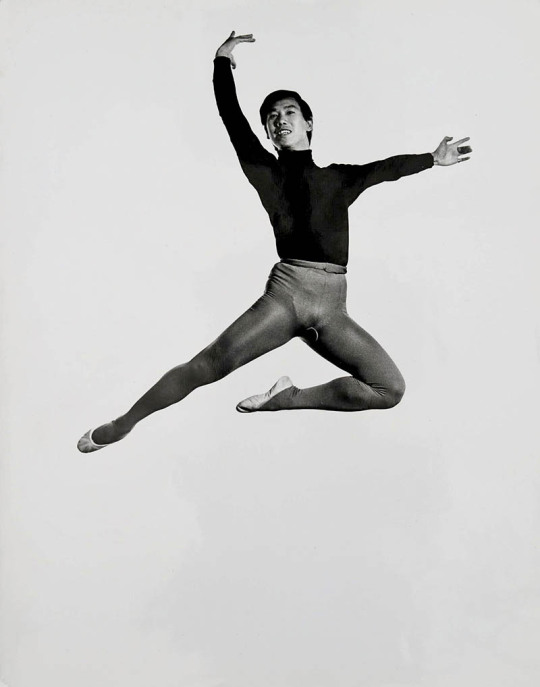
George Li as a student at the School of American Ballet. Photo: George Lee private collection via the NY Times
He recalled that during a “Nutcracker” dress rehearsal, the City Ballet makeup artist put him in full yellowface, and Balanchine insisted he take off the makeup. “He is Asian enough! Why do you make him more?” he remembers Balanchine saying. Lee was costumed in the Fu Manchu mustache, queue ponytail and rice paddy hat often associated with the role, now widely critiqued as racist caricatures. But he said he didn’t take offense. “Dancing is dancing,” he said.
Lee performed in “The Nutcracker” as a student; he was never invited to join City Ballet. But he clearly excelled in his classes and onstage. For that, he credits his strong foundation of Russian training in China — and his mother’s exacting standards. He can still see her standing in the studio doorway at the School of American Ballet, observing closely.
“She was watching the class and then would go home and tell me, ‘You did this wrong or that wrong, you got to do it this way,’” he said. “So I really worked hard, and I was good.” (His favorite teacher at the school was the demanding Anatole Oboukhoff: “He always wanted more, and that’s why I liked him very much.”)
To make a living Lee turned to musical theater, performing in shows like “Baker Street” on Broadway and the cabaret “Carol Channing with her 10 Stout-Hearted Men,” which opened in London. He pieced together jobs for more than 20 years, often unsure of what would come next.

Lee in flight in a production of “Flower Drum Song” in Las Vegas in the early 1960s. Photo: George Lee personal collection via the NY Times
He was dancing in a Vegas revue, “Alcazar de Paris,” now in his 40s, when a blackjack dealer friend suggested he go to dealer school. “I can’t dance all my life,” he remembers thinking. He decided to give dealing a try and soon landed a job at the Four Queens. Aside from four years at another casino, he has worked there ever since.
In December 2022, he got a voice mail message from Lin. With her reporting skills and some crucial assists from Yu, she had determined that he lived in Las Vegas. Of the five phone numbers she found for George Lees, four led nowhere; his was the last she tried.
When they finally connected, she put her other project on hold to focus on his story; she and her small creative team had a final cut by November. “George is 88, and I wanted him to be able to enjoy this moment, where people recognize him for his dancing,” she said.
As he prepares to return to New York, Lee said he felt gratified, most of all, for his mother.
“I’m proud for her that I didn’t let her down,” he said. “It makes me feel better to look up at her and say: ‘Look, mother, now you see what’s happening, what you did for me. You gave me all the good foundation, everything. Through you, I’m here now.’”

George Lee today. Photo: Saeed Rahbaran for The New York Times
#Balanchine#George Lee#George Li#Nutcracker ballet#Balanchine's Nutcracker#Asian stereotypes#Nutcracker Chinese Dance#New York City Ballet#NYCB#Ten Times Better#ballet film#Saeed Rahbaran#Andrea Mohin
20 notes
·
View notes
Photo

Indiana Woodward and Aaron Sanz in Serenade.
#indiana woodward#serenade#aaron sanz#new york city ballet#prima ballerina#nycb gif#gif#my gif#ballet gif
60 notes
·
View notes
Text

Maria Tallchief and Francisco Moncion in the New York City Ballet production of The Firebird
Source
115 notes
·
View notes
Text

Jovani Furlan Junior - New York City Ballet - photo by Alinne Volpato
#jovani furlan junior#jovani furlan#nyc ballet#new york city ballet#Alinne Volpato#dance#ballet#brazilian ballet dancers#bailarín#danseur#dancer#ballerino#tänzer#ballet men#boys of ballet#male dancers
194 notes
·
View notes
Text


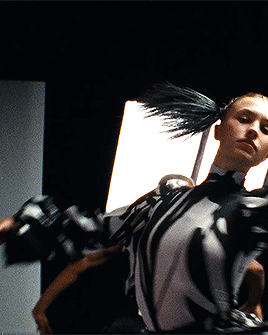


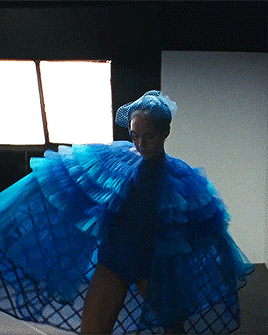
10 years of the NYC fashion gala pt. 2🤍
#ballet#balletedit#ballet gif#nyc#new york city ballet#costume#fall fashion gala#ballerina#dancer#SBedits
52 notes
·
View notes
Text

Students at the School of American Ballet, 1936. It was then on Madison Ave.; now it's part of Lincoln Center.
Photo: Alfred Eisenstaedt for Life magazine via Life IG
#vintage New York#1930s#Alfred Eisenstaedt#School of American Ballet#SAB#ballet school#ballet#New York City Ballet#George Balanchine
88 notes
·
View notes
Text

Chun Wai Chan | Photo by Daniel Chen
160 notes
·
View notes
